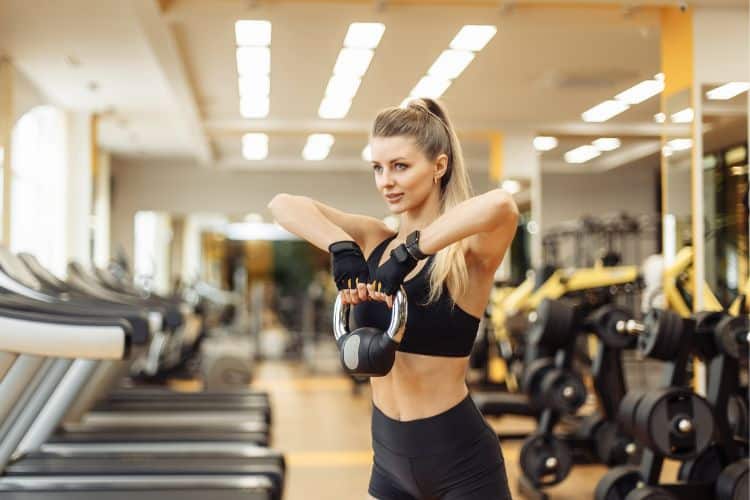Sign up for workout ideas, training advice, reviews of the latest gear and more.






If you’re tired of feeling stiff, tight, or limited during workouts—or even during everyday activities—a 30-minute full body mobility workout may be exactly what your body needs. Mobility training is often overlooked, yet it’s one of the most important components of long-term fitness, healthy aging, injury prevention, and improved athletic performance. Whether you exercise at the gym, at home, or you’re stepping into movement for the first time, this routine will help you unlock better motion in your hips, shoulders, spine, and ankles, making every workout more effective.
This guide walks you through what mobility training is, why it matters, and offers a complete 30-minute mobility routine that you can follow anywhere. Designed specifically with women’s wellness in mind, this routine blends dynamic movement, controlled stretching, and stability work to help you feel loose, aligned, and energized.
Mobility refers to your body’s ability to move joints freely through a full range of motion with strength and control. Unlike flexibility—which focuses on muscle length—mobility combines flexibility, stability, and coordination to help you move with ease.
Although they’re related, mobility and flexibility serve different functions:
You might be flexible but still lack mobility if you cannot control movement at your joints. For example, being able to do the splits demonstrates flexibility, but being able to squat deeply without your heels lifting is mobility.
Mobility becomes even more important with age, hormonal changes, and repetitive movement patterns. For women, mobility training supports:
If you want to move better, train harder, and recover faster, mobility must be part of your routine.
A consistent mobility routine provides benefits that extend far beyond exercise performance.
Mobility restores normal joint movement, reducing common areas of tension—hips, lower back, hamstrings, shoulders, and chest. Many women experience pain from sitting, driving, carrying kids, or previous injuries. Mobility helps relieve those aches naturally.
Strong mobility equals better form. Better form equals better results.
Greater mobility improves:
Mobility increases blood flow, helping muscles recover faster after tough workouts. It’s an excellent low-impact session to do between strength or cardio days.
Poor posture often results from tight chest muscles, weak glutes, or a stiff thoracic spine. Mobility loosens the upper body and restores natural alignment.
Mobility helps you do everyday movement—standing up, bending, squatting, lifting—without pain. Long-term mobility training supports healthy aging and independence.
Before diving into the full routine, here’s how this session is structured for maximum results:
Light movement to raise circulation and prepare joints.
Continuous movement patterns that open up the hips, spine, shoulders, and ankles.
Controlled joint movement to improve long-term mobility.
To restore the nervous system and promote relaxation.
This 30-minute full-body mobility workout requires no equipment and can be done in your living room, office, or gym.
Start by lifting your knees high and swinging your arms. Keep your chest tall. This warms the hips, knees, and ankles while boosting circulation.
Keep your shoulders relaxed. Make slow, controlled circles to activate the shoulder girdle and upper back.
Plant your feet shoulder-width apart and draw circles with your hips. Focus on unlocking the lower back and hip flexors.
Perform each movement for the recommended time. Move through the circuit twice.
Move slowly between arching and rounding your spine.
Benefits: Loosens the spine, improves back mobility, helps with stiffness from sitting.
How to Do It:
Start on hands and knees → inhale as you lift your chest → exhale as you round your back.
This flow enhances shoulder mobility, hamstring length, and core activation.
How to Do It:
Push into Downward Dog → shift forward into Plank → return to Dog.
A deep total-body mobility move that targets hips, thoracic spine, hamstrings, and hip flexors.
How to Do It:
Step into a long lunge → drop hand inside foot → rotate your upper body open.
Strengthens glutes while improving hip rotation—a key mobility factor.
How to Do It:
Stand on one leg → hinge forward → open and close your hips with control.
Helps counteract rounded-shoulder posture and improves rotation.
How to Do It:
Start on all fours → place one hand behind head → rotate elbow up.
Sit into a deep squat and use elbows to drive knees outward.
Benefits: Hip mobility, ankle mobility, lower back release.
Great for groin flexibility and hip stability.
How to Do It:
Shift from side to side in a wide stance, keeping one leg straight.
Targets the posterior chain through dynamic movement.
Lie face-down and sweep arms around in a half-circle motion.
Benefits: Restores shoulder mobility, improves posture.
Step back into a lunge, then rise into a hip-flexor stretch.
Benefits: Improves balance, hip mobility, and leg control.
CARs are slow, controlled movements designed to improve joint health.
Make slow rotations with the arm, keeping torso stable.
Lift knee up → rotate out → sweep behind → return to front.
Point foot → rotate both clockwise and counterclockwise.
Hold gently and breathe deeply.
Place hands on ribcage → inhale deeply → exhale slowly through the mouth.
This resets the nervous system and leaves you feeling calm and recharged.
Mobility improves when it is consistent. Use these tips to accelerate your progress.
Short sessions—even 10 minutes—can lead to major improvement.
Mobility is about intention, not speed or reps.
Your breath helps signal your body to release tension.
Most women benefit from focusing on:
It warms up your joints and enhances lifting technique.
It helps recovery and relieves soreness.
This routine is suitable for:
It’s also ideal for those recovering from hard workouts or trying to increase functional movement.
For best results:
Mobility is not strenuous, so it can be done frequently.
A 30-minute full body mobility workout is one of the most valuable investments you can make in your health. Not only does it reduce stiffness and pain, but it also improves strength, stability, body alignment, and overall movement quality.
Mobility training unlocks your body’s full potential—helping you lift stronger, move better, and feel more energized throughout the day. Whether you pair this session with strength training, use it on rest days, or perform it in the morning to wake up your body, mobility is the foundation of lifelong fitness.
If you enjoyed this 30-minute full-body mobility session, you might also like our in-depth article on Best Mobility Exercises To Stay Active & Flexible where we explore key joint-mobility moves for women. For those days when you also want to build strength and endurance in one go, check out our 4-Week Full Body Exercise Plan for Strength & Fat Loss which integrates mobility along with strength and cardio. If you prefer a body-weight approach you can do at home, our Full Body Calisthenics Strength Training for Muscle and Mobility article offers progressions and mobility-enhancing moves without equipment. And if you want to zero in on improving upper-body mobility and shoulder health, our Bodyweight Shoulder Workouts: Mobility Without Weights guide is perfect.
Stay up to date on the latest women’s health, fitness and lifestyle trends and tips.